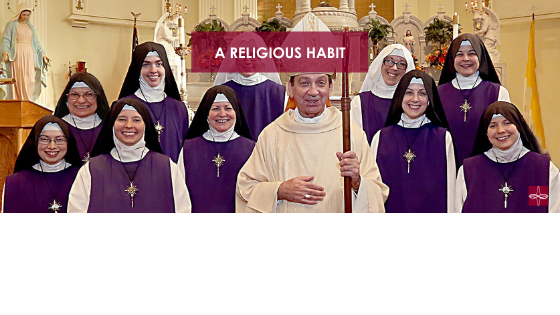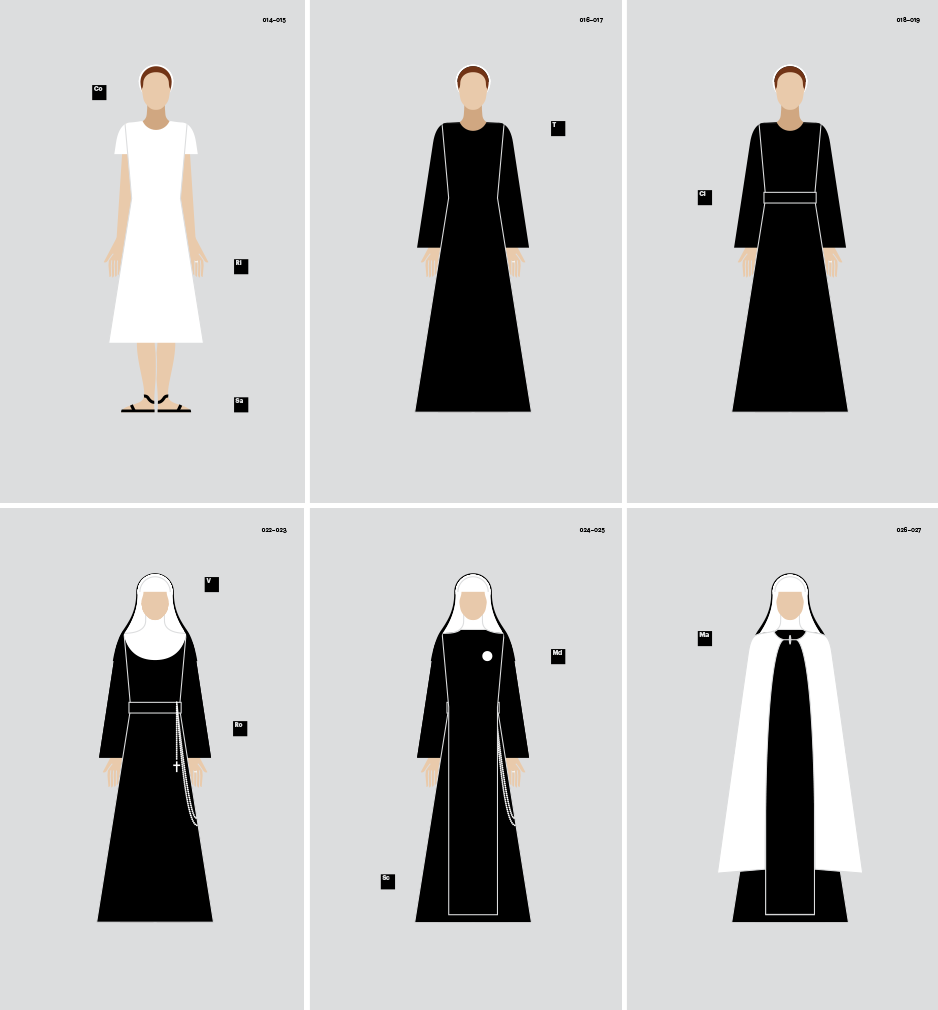

Since the habit is a sign of consecration, poverty and membership in a particular Religious family, I join the Fathers of the Synod in strongly recommending to men and women religious that they wear their proper habit, suitably adapted to the conditions of time and place. In this regard the Church has a right to expect a significant contribution from consecrated persons, called as they are in every situation to bear clear witness that they belong to Christ. §25 … The Church must always seek to make her presence visible in everyday life, especially in contemporary culture, which is often very secularized and yet sensitive to the language of signs. Pope John Paul II in his Post-Apostolic Exhortation Vita consecrata (1996) says concerning the religious habit of consecrated persons: In some orders, different types or levels of profession are indicated by differences in habits. Among some Franciscan communities of men, novices wear a sort of overshirt over their tunic Carthusian novices wear a black cloak over their white habit. In some cases the novice's habit will be somewhat different from the customary habit: for instance, in certain orders of women that use the veil, it is common for novices to wear a white veil while professed members wear black, or if the order generally wears white, the novice wears a gray veil. In many orders, the conclusion of postulancy and the beginning of the novitiate is marked by a ceremony, during which the new novice is accepted then clothed in the community's habit by the superior.

For instance in Turkey, where religious garb is not allowed in public, a Franciscan might wear street clothes. This requires flexibility and creativity. Catholic Canon Law requires only that it be in some way identifiable so that the person may serve as a witness to Gospel values.

Modern habits are sometimes eschewed in favour of a simple business suit. In the typical Roman Catholic or Anglican orders, the habit consists of a tunic covered by a scapular and cowl, with a hood for monks and a veil for nuns in other orders it may be a distinctive form of cassock for men, or a distinctive habit and veil for women. Traditionally some plain garb recognisable as a religious habit has also been folded by those leading the religious eremitic and anachoritic life, although in their case without conformity to a particular uniform style. Anthony the Great, wearing the Coptic habit.Ī religious habit is a distinctive set of garments worn by members of a religious order.


 0 kommentar(er)
0 kommentar(er)
